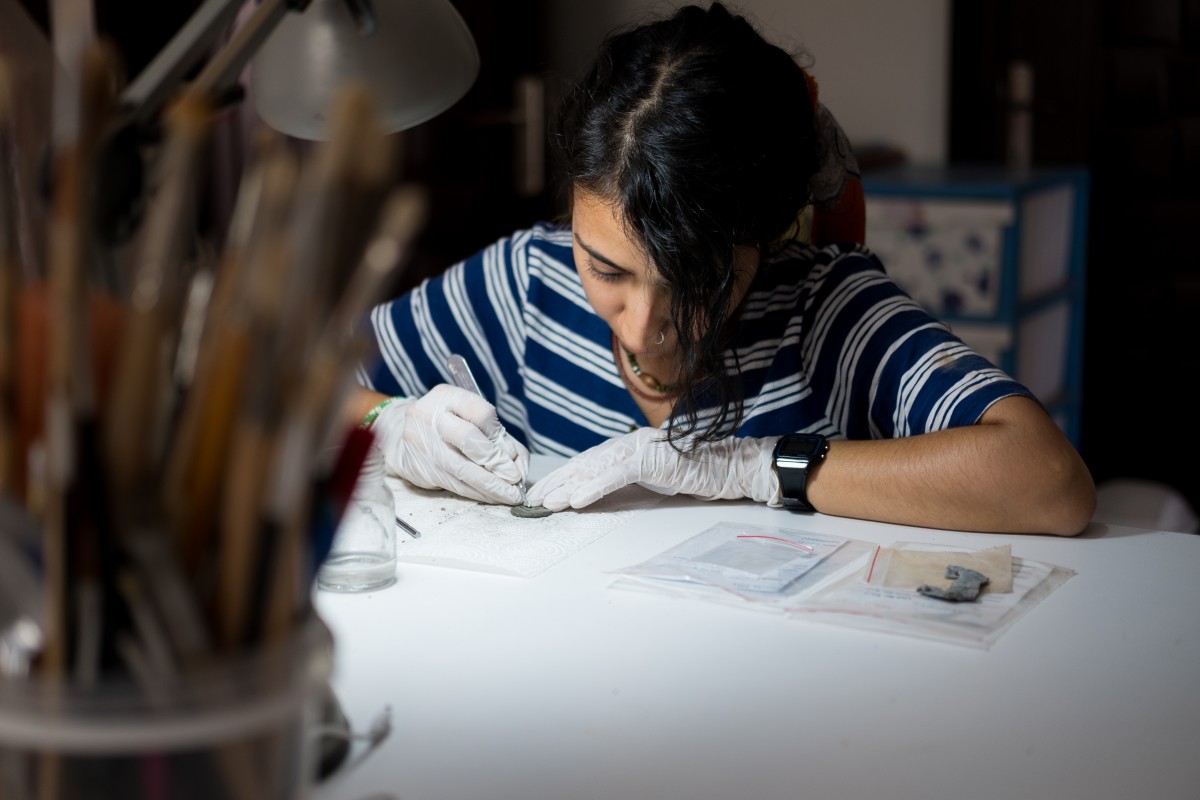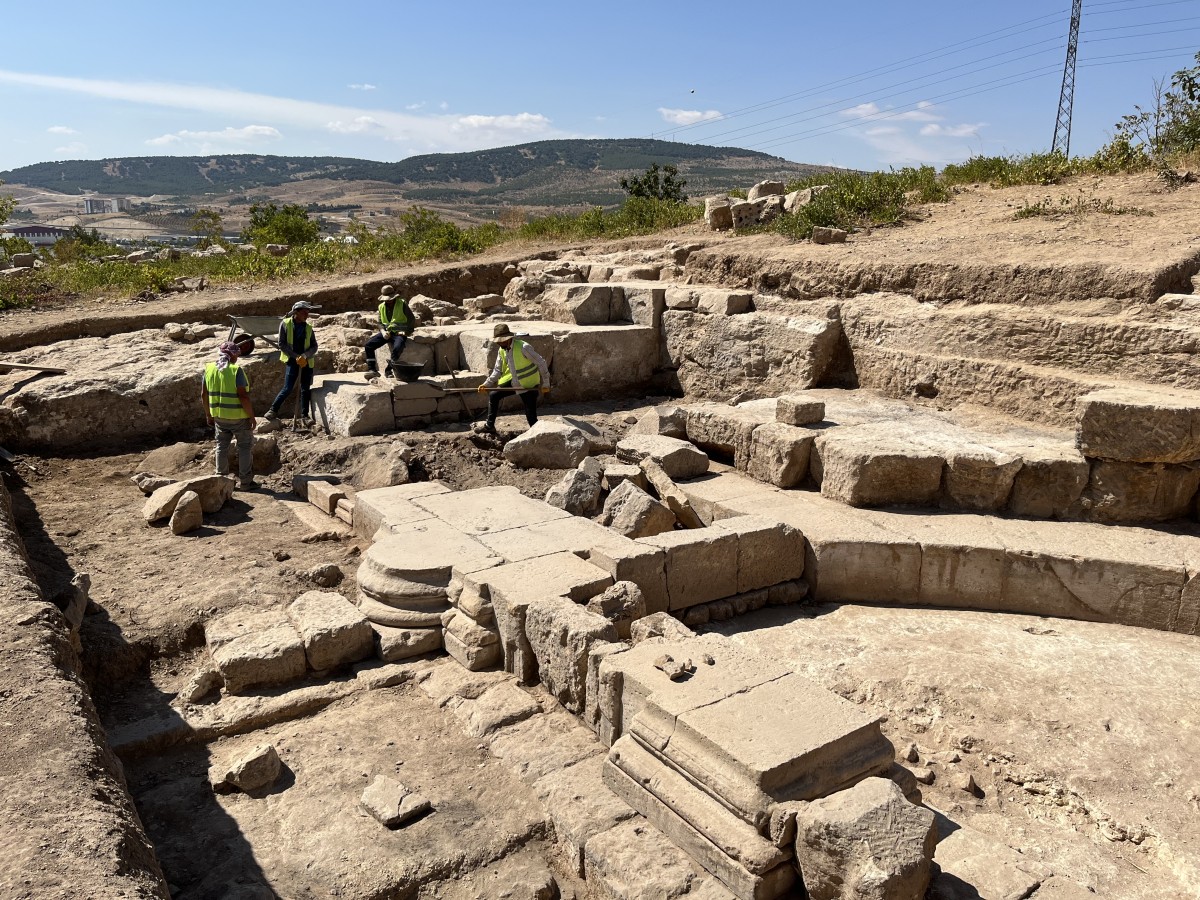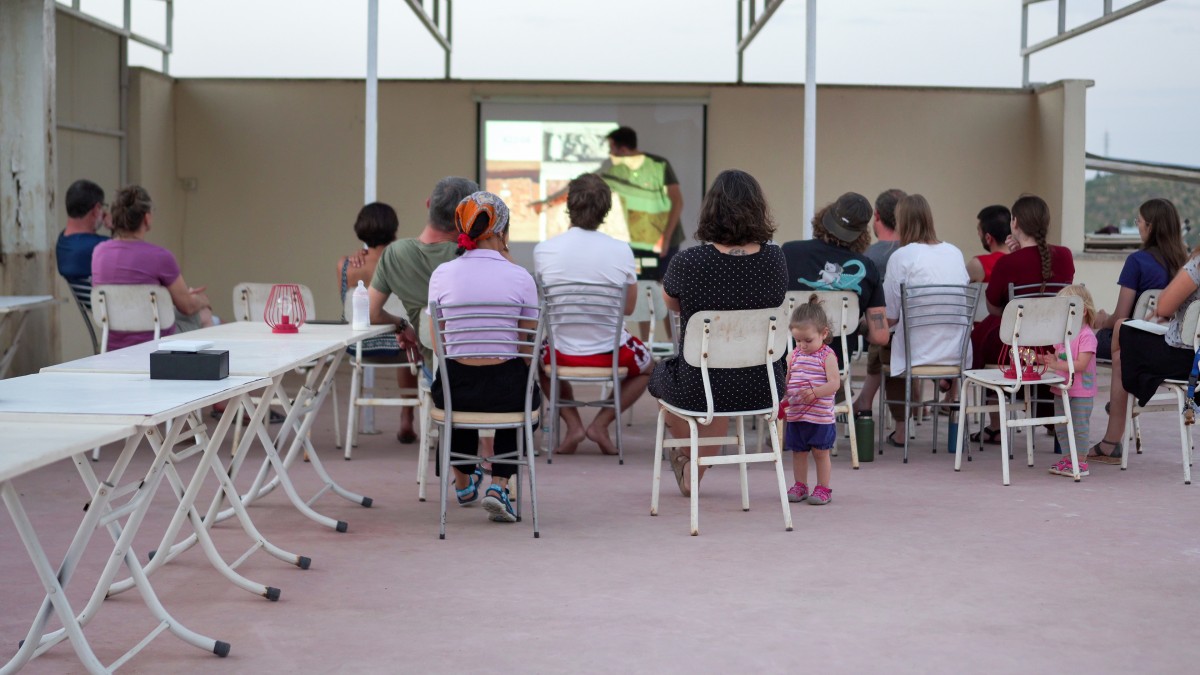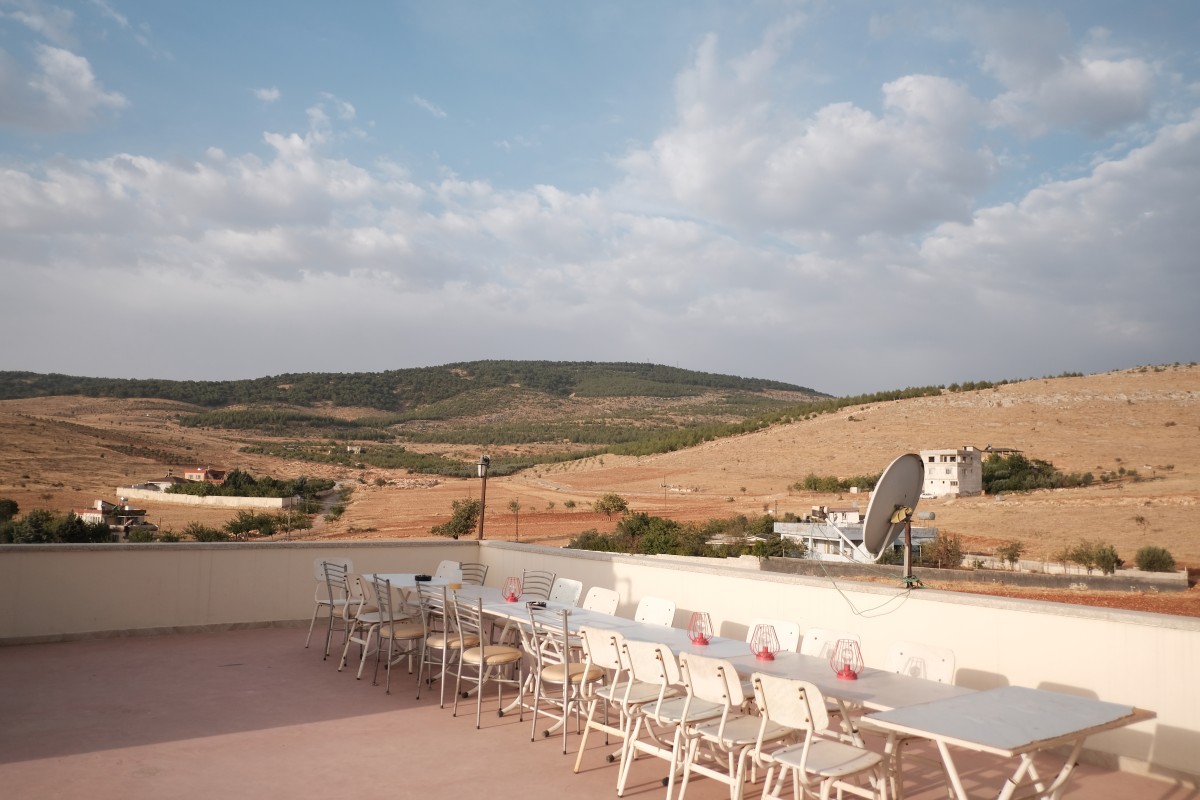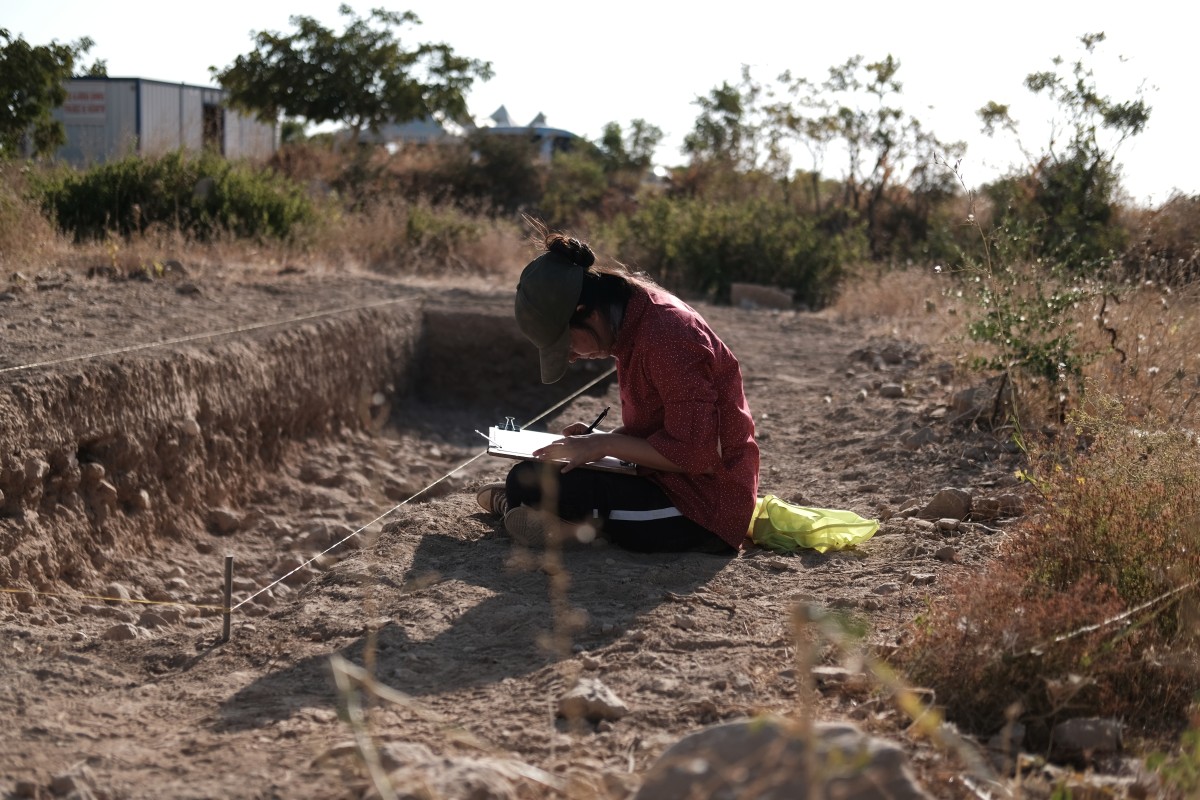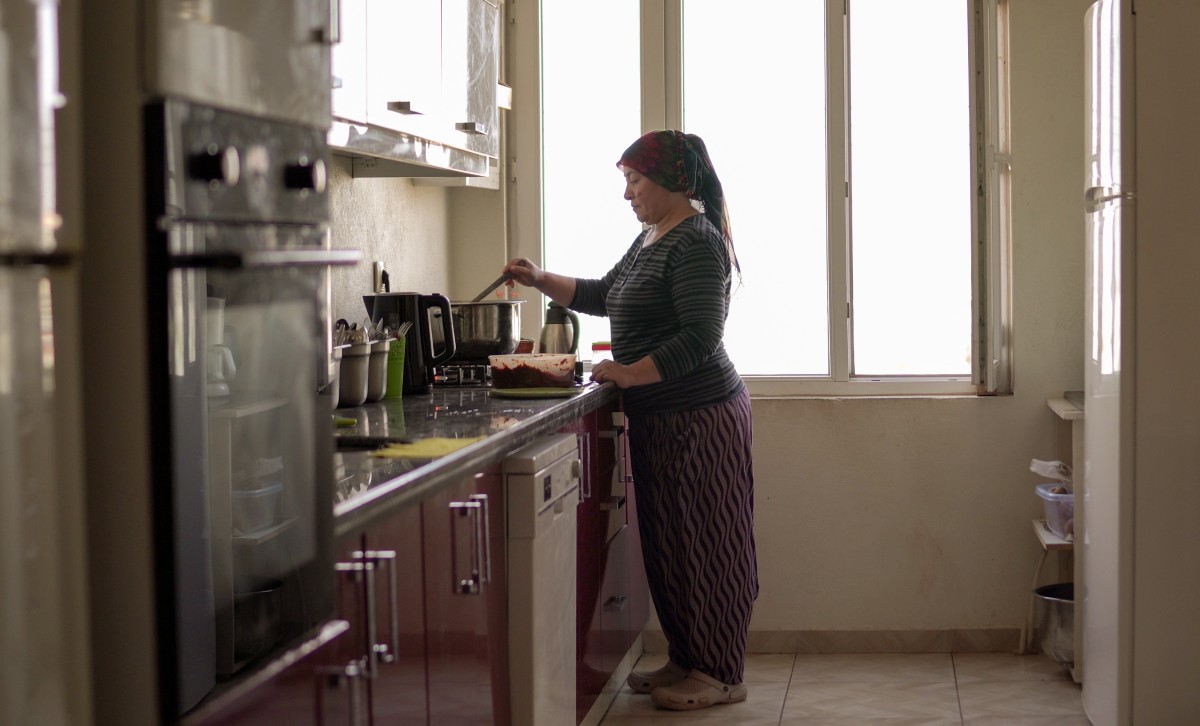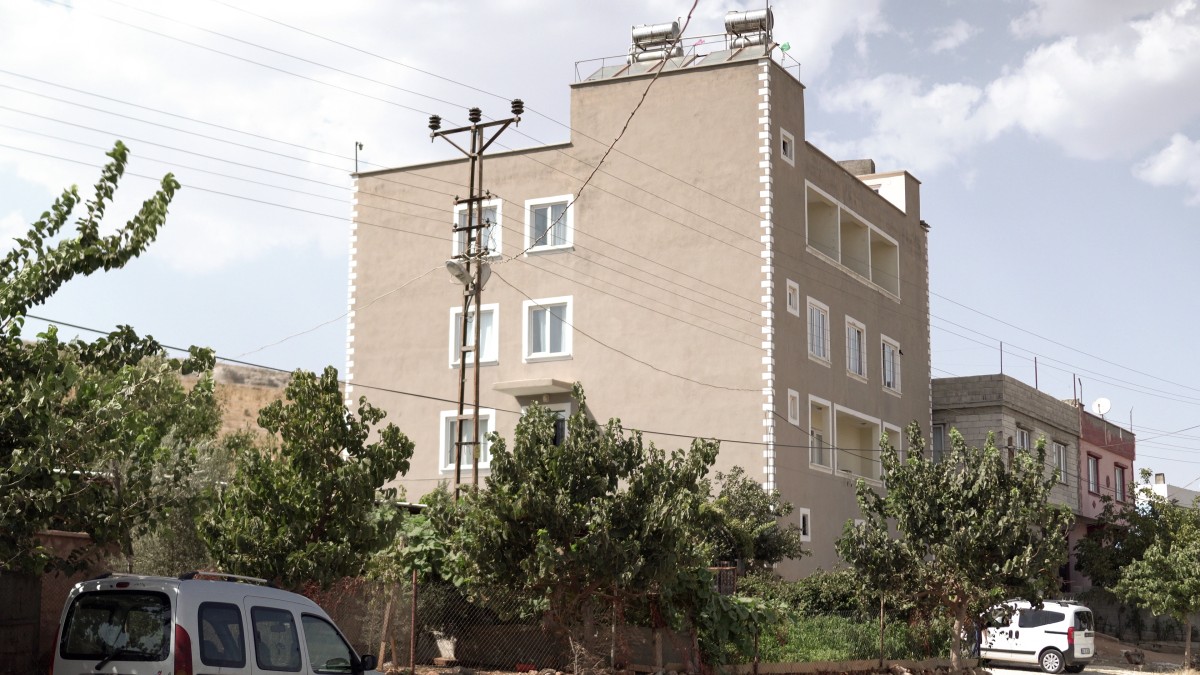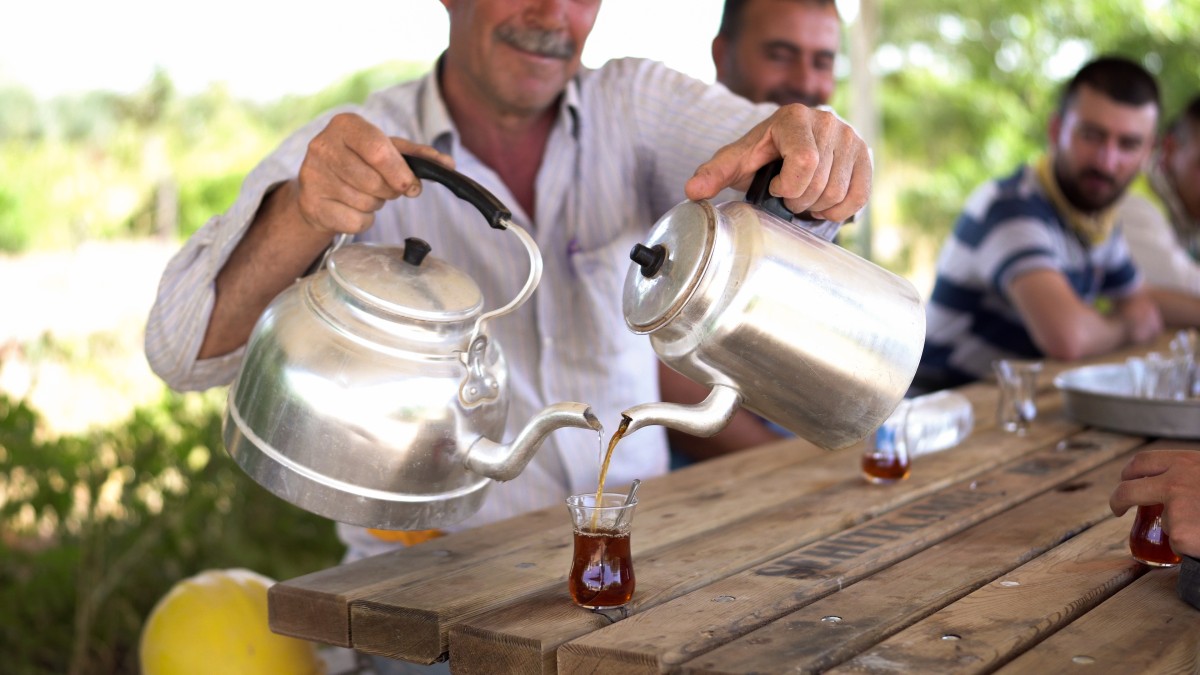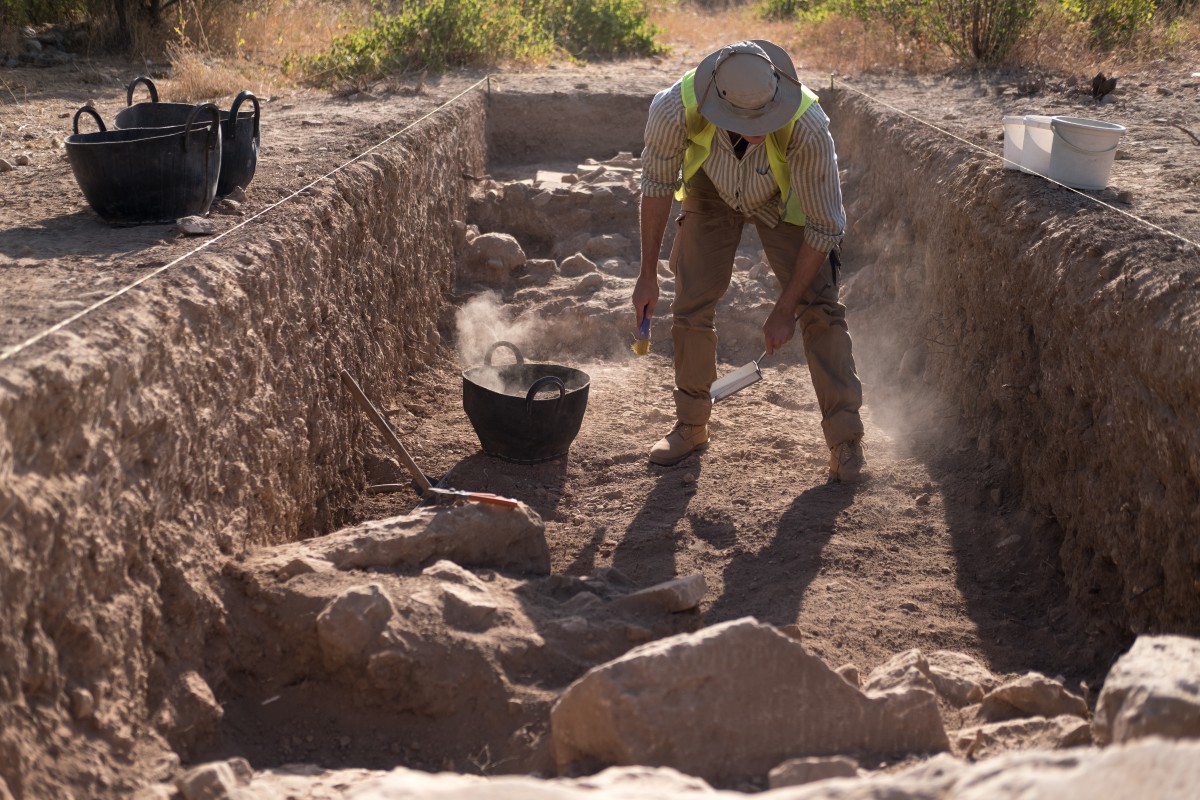
Through the dust to the stone
Every year, members of the Asia Minor Research Centre at Münster University spend several weeks in the summer in south-eastern Turkey to study the archaeological remains of the village of Doliche. Sophie Pieper, a member of the University’s Communications and PR Department took a look at the excavation during a visit there.
4.53 am
A quiet crackling noise from the loudspeakers in the small village of Dülük, near the Syrian border, brings the night to an end. Coinciding precisely with sunrise, the voice of the muezzin sounds out across the land, calling the faithful to morning prayer. Just a short while later, the day also begins in the excavation house at the Doliche research project. At six o’clock in the morning, around 25 students and researchers from Germany, Italy, the Netherlands and Turkey gather in the breakfast room. Half an hour later, some of the team drive out to the excavation area, about two kilometres away. For this purpose, there is a Münster University van standing in front of the house to take the archaeologists there. And how did a van from Münster find its way to Dülük, almost 3,800 kilometres away? “Every year, students drive the van from Münster to Turkey,” says Prof. Engelbert Winter, who has been heading the project since its inception in 1997. “We’d like to have a vehicle here permanently, but it would cost too much here in Turkey, unfortunately.” For the students, the adventure of travelling to the excavation site began four days earlier, taking the van to Turkey through Austria, Italy and Greece. After the summer’s work, it takes the same route back – but with more time for stopovers and sightseeing.
7 am
Work begins at seven o’clock on the dot – both in the field and in the house. The excavation team first takes a look at how things are in the so-called sections – in other words, the individual excavation areas. They waste no time in doing so, because the sun is already beating down mercilessly on Keber Tepe, the hill on which the remains of the ancient town of Doliche are situated. In August and September, temperatures reach the 40° mark – which means that long clothing, head covering and sun protection cream factor 50 are compulsory. The high temperatures are also the reason for the rotation system for the Turkish workers who every year provide support in the excavation work. Around 30 people are engaged in removing the layers in the sections. Because the work is so strenuous, the workers divide up into three groups. One group works with picks and shovels, a second group uses wheelbarrows, trowels and sieves to sift through the material dug out of the ground and cart it away, while group number three takes a break to rest in the shade. After 20 minutes of working in the field, the groups relieve each other. “This type of rotation is the only way the work can be done in this heat,” explains excavation manager Prof. Michael Blömer.
Anyone looking out over the excavation field is invariably reminded of a “hidden object game”. What you see are excavation helpers carrying layers of earth away and transporting stones, as well as researchers and students with trowels and brushes removing earth and fine sediment, layer by layer, to reveal the structures of an antique temple beneath. Other people involved in the work are busy making drawings of the respective sections, temple walls or individual objects found. “Nowadays we use a lot of technical aids in our work, such as drones, 3D scanners or geophysical measurements, which all provide us with detailed images of the excavation area,” Michael Blömer explains. “However, we still need to make some drawings by hand because even with the best technology you get distortions or errors. Also, details such as the structure of individual stone formations can’t always be recognised properly on photos.” There are two students from the Faculty of Historical Architecture Research at the OTH Regensburg University of Applied Sciences working in the field. Thanks to their expertise, all the architectural details can be properly documented. This is a vital prerequisite for the later scientific and interpretative work to be carried out relating to their historical architectural context. “The excavation wouldn’t function without collaboration like this,” says Engelbert Winter. “We have experts from a variety of disciplines and countries who provide support in our campaign. It is only by working as a team that we can open up and reveal the excavation area in all its complexity.”
Right at the beginning of every year, the project management team has to send to the Turkish Cultural Assets and Museums Department a list of all the people participating in the campaign planned for the summer. This is the basis for the excavation licence reissued each year by the Department. “Working closely together with the Turkish authorities in all organisational matters, including the protection of the excavation area, is important for us. The resulting trust on all sides is the basis for successful collaboration over such a long period of time,” says Winter. During the campaign, a representative from the Department is also present. He lives in the excavation house for the whole time, is out in the field every day, making sure that the legal regulations covering excavations in Turkey are observed, and he is an important contact person right up to the last day of the excavation, when all the finds are locked up in storage or handed over to the relevant museum.
12 noon
In the lunch break, the workers, students and researchers come together under a canopy at the edge of the excavation area and eat together. Conversation takes place in Turkish, English, German, sign language and sentences provided by Google translator. This is also typical of an excavation: communication between different nationalities and cultures. After a short break, it’s back to work. Archaeology student Fynn Riepe is at work on one of the sections. At first sight, the field looks unspectacular. On the ground, irregular layers of stone can be seen, covered with dust and earth. Riepe uses a trowel to clear away layer after layer. Unlike any non-specialist, he quickly sees a structure: “If you look sideways at the levels, it becomes clear that what we’re seeing here is a floor. The first irregular layer is mortar, and there’s stone underneath it.” While digging, however, he doesn’t just rely on what he sees. “Archaeologists need to have good hearing too,” he says. “When you’re digging, stone sounds different from mortar or earth. You learn these subtle differences in the course of time.”
Meanwhile, in the house, the finds are being worked on. Everything that is discovered out in the field – for example, ceramic fragments, mosaic pieces or bones – goes through the hands of Dr. Eva Strothenke, a research associate at the Asia Minor Research Centre. She looks closely at every item found and decides what happens to it. The first step is to record everything in a database. Items made of ceramic or glass which allow conclusions to be drawn about the original vessel they came from are washed, dried, drawn and then photographed. This year, for the first time, a so-called laser-aided profiler is being used, which various disciplines working in the field of archaeology at Münster University joined together to buy, and which can be used to carry out the documentation of ceramic items more efficiently thanks to ultra-modern scanning technology. Metallic items found, such as coins, are often in a bad condition due to being stored in the ground for such a long time and they have to be carefully cleaned. In the restoration workshop, the experts carefully remove any soiling or deposits. “It’s always the same process when we work on any items found,” says Strothenke, “but they’re something new, every time, and that’s what makes our work so fascinating.” And, as Michael Blömer, adds, “The work done in the house is at the heart of our campaign. We’re here for just over eight weeks and, in that time, we register and document around 50,000 items that we find. This is necessary above all for the scientific work and the publications which follow on from the excavation.”
4 pm
At 4 pm, work finishes at the excavation – but the day is not yet over. The team makes its way back to the house, where they sort out and label photos or register items found. Round about 5 o’clock they call it a day. After the evening meal, the rest of the day is mostly spent on the roof terrace. Twice a week, the so-called “toplantı” is held – which is the Turkish word for “meeting”. Each of the teams reports on the work they have done, bringing each other up to date, and they plan activities for the weekend. On Saturday, work finishes around midday – and then the team undertakes excursions in the surrounding region. If no “toplantı” is scheduled, the team members play cards on the roof terrace, watch films using a beamer, or simply talk about the day’s events – until at some point the muezzin can again be heard, this time heralding the night-time.
The project:
Since 1997, scientists from the Asia Minor Research Centre at the Department of Ancient History at Münster University have been undertaking research work at the ancient town of Doliche, situated on the outskirts of the modern metropolis of Gaziantep in south-eastern Turkey. Doliche was a small town in the north of ancient Syria and was important above all as a religious centre. The principal god of the town – Jupiter Dolichenus – was worshipped all over the Roman Empire. The aim of the project is to research into the development of the town and the way of life of its inhabitants – from Hellenistic-Roman times to Christian Late Antiquity and the Early Islamic Period.
This article was first published in the University newspaper “wissen|leben” No. 7, 16 November 2022

